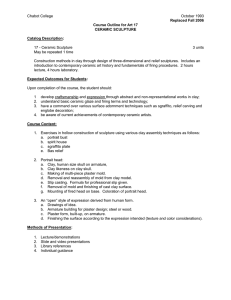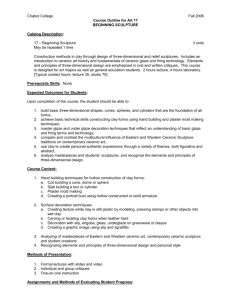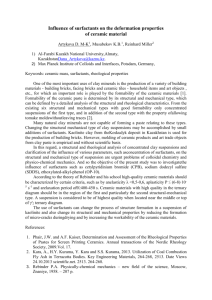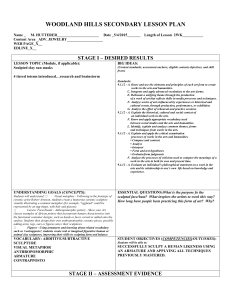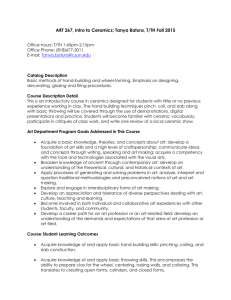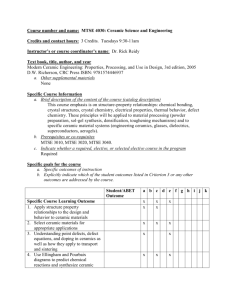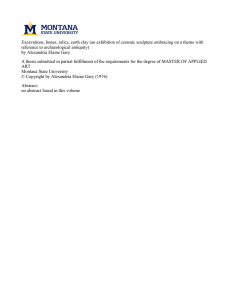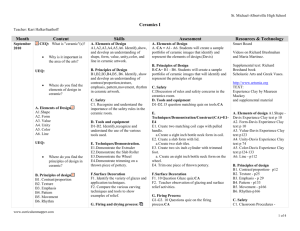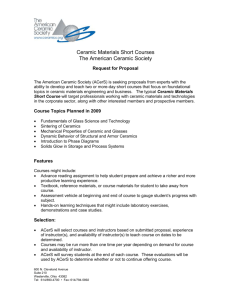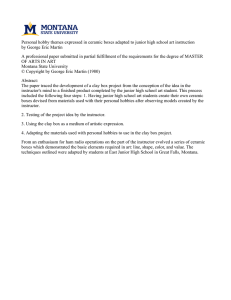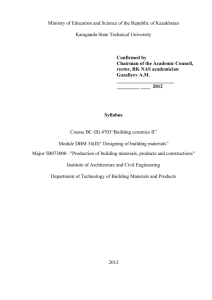SLO_151_E
advertisement
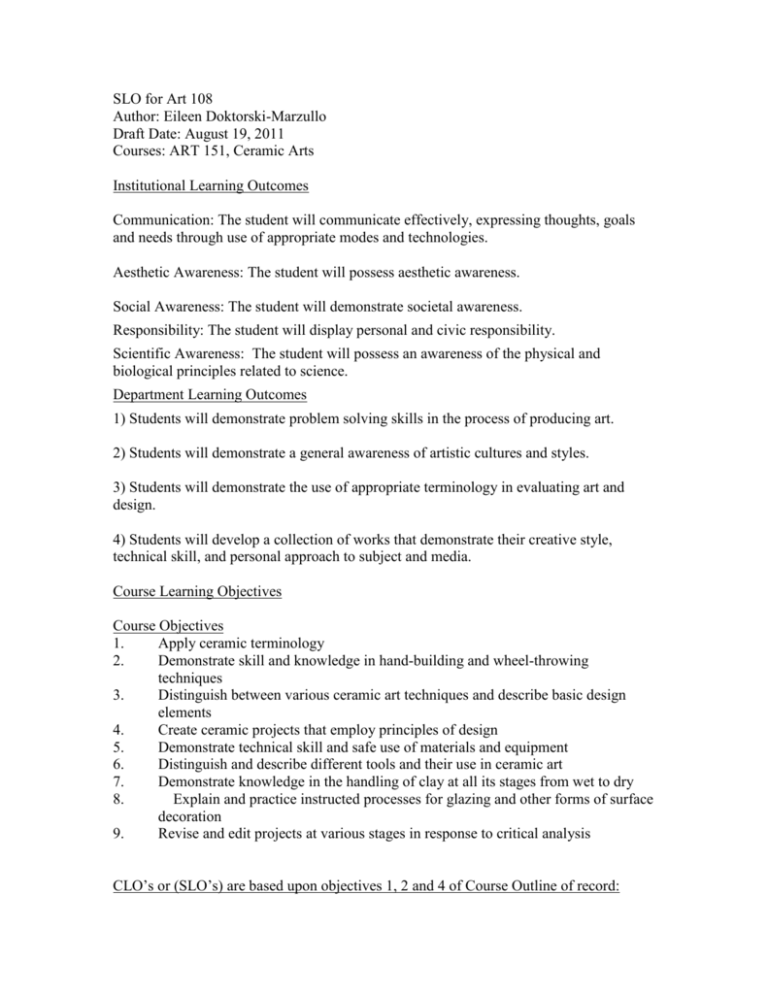
SLO for Art 108 Author: Eileen Doktorski-Marzullo Draft Date: August 19, 2011 Courses: ART 151, Ceramic Arts Institutional Learning Outcomes Communication: The student will communicate effectively, expressing thoughts, goals and needs through use of appropriate modes and technologies. Aesthetic Awareness: The student will possess aesthetic awareness. Social Awareness: The student will demonstrate societal awareness. Responsibility: The student will display personal and civic responsibility. Scientific Awareness: The student will possess an awareness of the physical and biological principles related to science. Department Learning Outcomes 1) Students will demonstrate problem solving skills in the process of producing art. 2) Students will demonstrate a general awareness of artistic cultures and styles. 3) Students will demonstrate the use of appropriate terminology in evaluating art and design. 4) Students will develop a collection of works that demonstrate their creative style, technical skill, and personal approach to subject and media. Course Learning Objectives Course Objectives 1. Apply ceramic terminology 2. Demonstrate skill and knowledge in hand-building and wheel-throwing techniques 3. Distinguish between various ceramic art techniques and describe basic design elements 4. Create ceramic projects that employ principles of design 5. Demonstrate technical skill and safe use of materials and equipment 6. Distinguish and describe different tools and their use in ceramic art 7. Demonstrate knowledge in the handling of clay at all its stages from wet to dry 8. Explain and practice instructed processes for glazing and other forms of surface decoration 9. Revise and edit projects at various stages in response to critical analysis CLO’s or (SLO’s) are based upon objectives 1, 2 and 4 of Course Outline of record: CLO Scale Components (1) Apply Ceramic Arts Terminology (essay, verbal presentation, quiz and final exam) Excellent: Correctly defines terminology, provides specific in-depth discussion of Ceramic Arts using proper terminology. Satisfactory: Correct, as above, but may lack full definitions, range of vocabulary or depth of discussion. Poor: Ceramic Arts Terminology is not identified or defined adequately. Terms are used or identified incorrectly or are absent from verbal presentations. Depth of discussion and appropriate terminology are lacking. (2) Demonstrates skill in hand-building techniques (Portfolio collection of assigned projects) Excellent: Successful bonding of separate elements and consistent clay thickness throughout. Projects demonstrate deliberate construction and skill using the instructed technique. Techniques applied to the clay at the optimum stages between wet to dry. Satisfactory: Adequate bonding of separate elements and consistent clay thickness throughout. Projects demonstrate adequate intention and skill. Technique application does not show full consideration of the stages of clay between wet to dry. As a result, projects may include minimal; cracking, sagging, lumpiness or inconsistent thickness. Poor: Projects lack adequate intention and skill. Techniques are used incorrectly and applied to the clay without consideration of the stages of clay between wet to dry. More than one the following is evident: unsuccessful bonding, visible separation of elements, cracking, obvious sagging, lumpiness, uneven shrinkage and inconstant thickness. (4) Create ceramic projects that employ principles of design (Assigned projects) Excellent: Multiple examples demonstrate a clear understanding of the basic principles of design. Projects demonstrate texture and surface design using a variety of instructed techniques; imprinting, tool-marking, incised line, slip decoration, bas-relief carving and sgraffito. Projects exhibit visual interest from multiple views and balanced proportions of the parts (foot, body rim) to the whole. Satisfactory: Examples demonstrate an adequate understanding of the basic principles of design. Projects demonstrate texture and surface design using a some of the instructed techniques; imprinting, tool-marking, incised line, slip decoration, bas-relief carving and sgraffito. Projects exhibit some visual interest from multiple views and adequate consideration of the proportions of the parts to the whole. Poor: Portfolio does not show evidence of principles of design as instructed. Projects demonstrate minimal texture and surface design. Projects do not have sufficient visual interest from multiple views. There is little or no evidence of planning the proportions.
